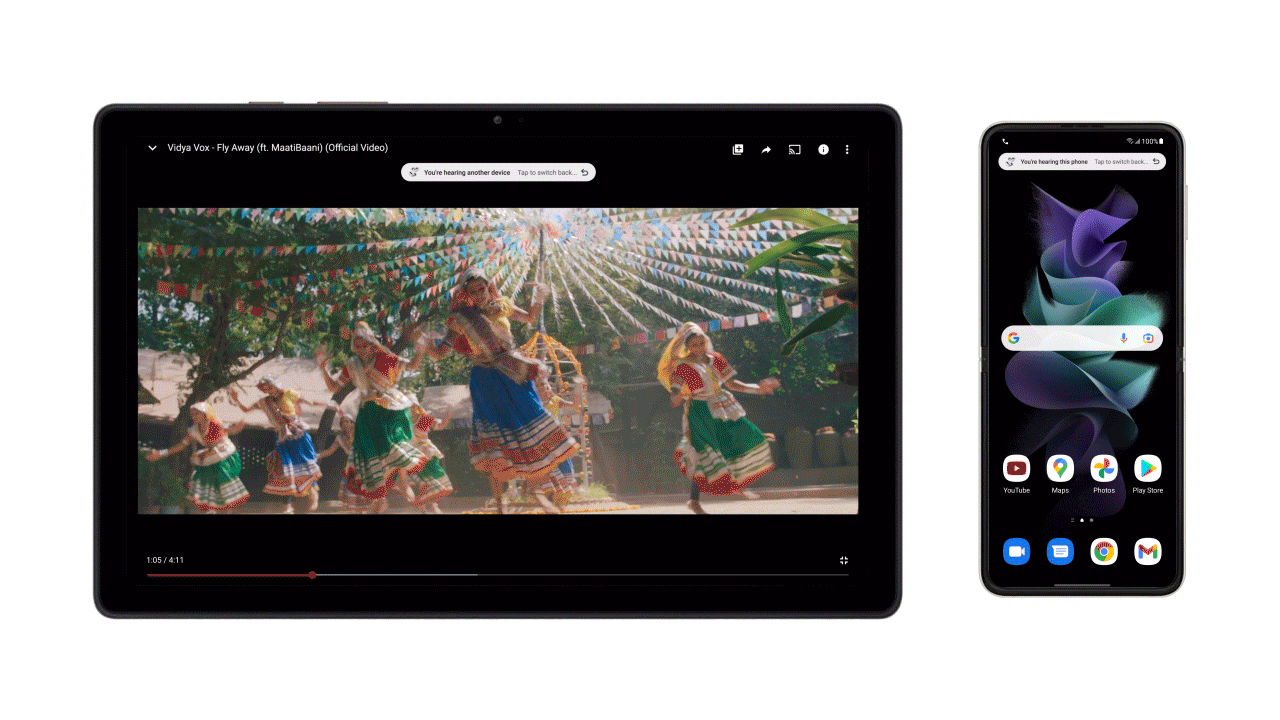Android show off their AirPods-like features at CES 2022, such as auto-device switching and spatial audio with head tracking
Image Credit: Google
Updates to Fast Pair bring new features like auto-switching and head tracking spatial audio, plus introduce the feature to more devices.
One of the top features on AirPods, enabled by Apple’s closed eco-system, is automatic switching between devices. Once paired to one Apple device, AirPods automatically connect to all devices signed in with the same Apple ID. When you play audio on another device, AirPods will automatically switch to the device you’re using. This is a relatively simple and obvious feature for Apple, where so many AirPods users are also iPhone, Mac, iPad, Apple Watch, etc. users, however it’s not easily replicated by other companies, such as Android (owned by Google) or Microsoft. At CES, Google announced a number of features titled “better together with Android and beyond” that hopes to help devices communicate with each other, to enable a seamless experience.
Google first introduced Fast Pair in 2020, making the pairing of some headphones with mobile devices a one-tap process, rather than the usual procedure of digging through the device’s settings. Now, Google are improving Fast Pair to make switching devices as easy as on AirPods. The update will be available on Android phones, Chromebooks, Android TV and select Windows PCs.

Auto-switching isn’t the only AirPods-like feature coming to Android soon. Google are also implementing full head tracking for spatial audio on Android, which, much like AirPods, adapt the 3D virtual location of sounds based on the physical location of your head. Google already supports basic spatial audio for some music services. This head tracking update is due in the “coming months”, although music streaming services, headphones and versions of Android are unknown.
Other updates to Fast Pair due to arrive in the coming weeks and months include brining Fast Pair to more devices including Google TV, other Android TV OS devices, Chromebooks and select Windows PCs thanks to a partnership with Acer and HP. This technology will also enable Nearby Share and text message sync, both features loved by Mac and iPhone users for some time, with AirDrop and iMessage an integral part of the Apple eco-system. Google are also due to bring some Chromecast abilities to Bose speakers and soundbars.
It’s great to see Google introduce some of the features offered by Apple. The real drawback for Google is the slow process of Android updates, especially on older phone, plus the lack of a comprehensive computer brand such as Windows under their wing, requiring partnerships with individual laptop brands to build seamless interconnected expriences between mobile and desktop devices.
